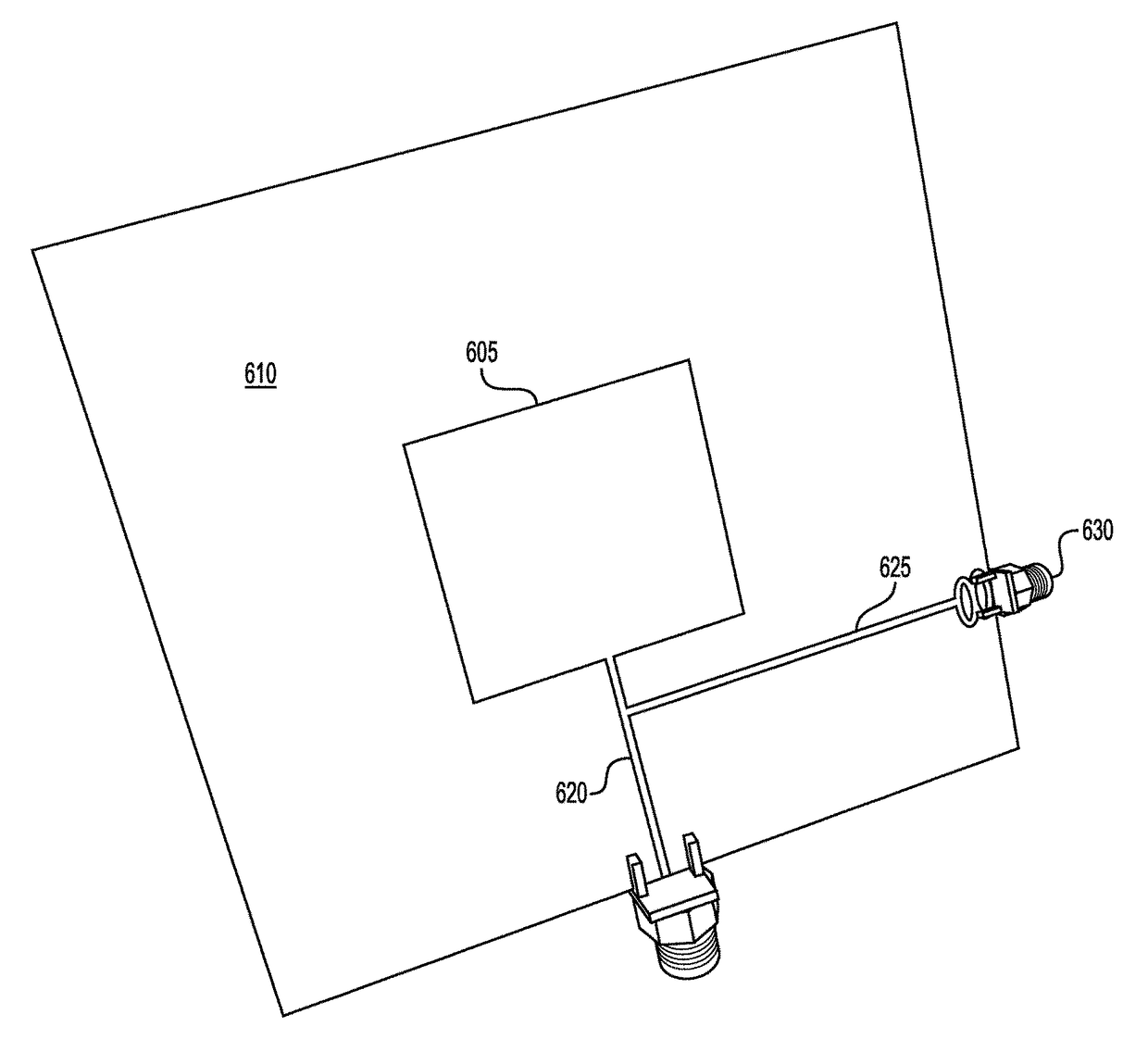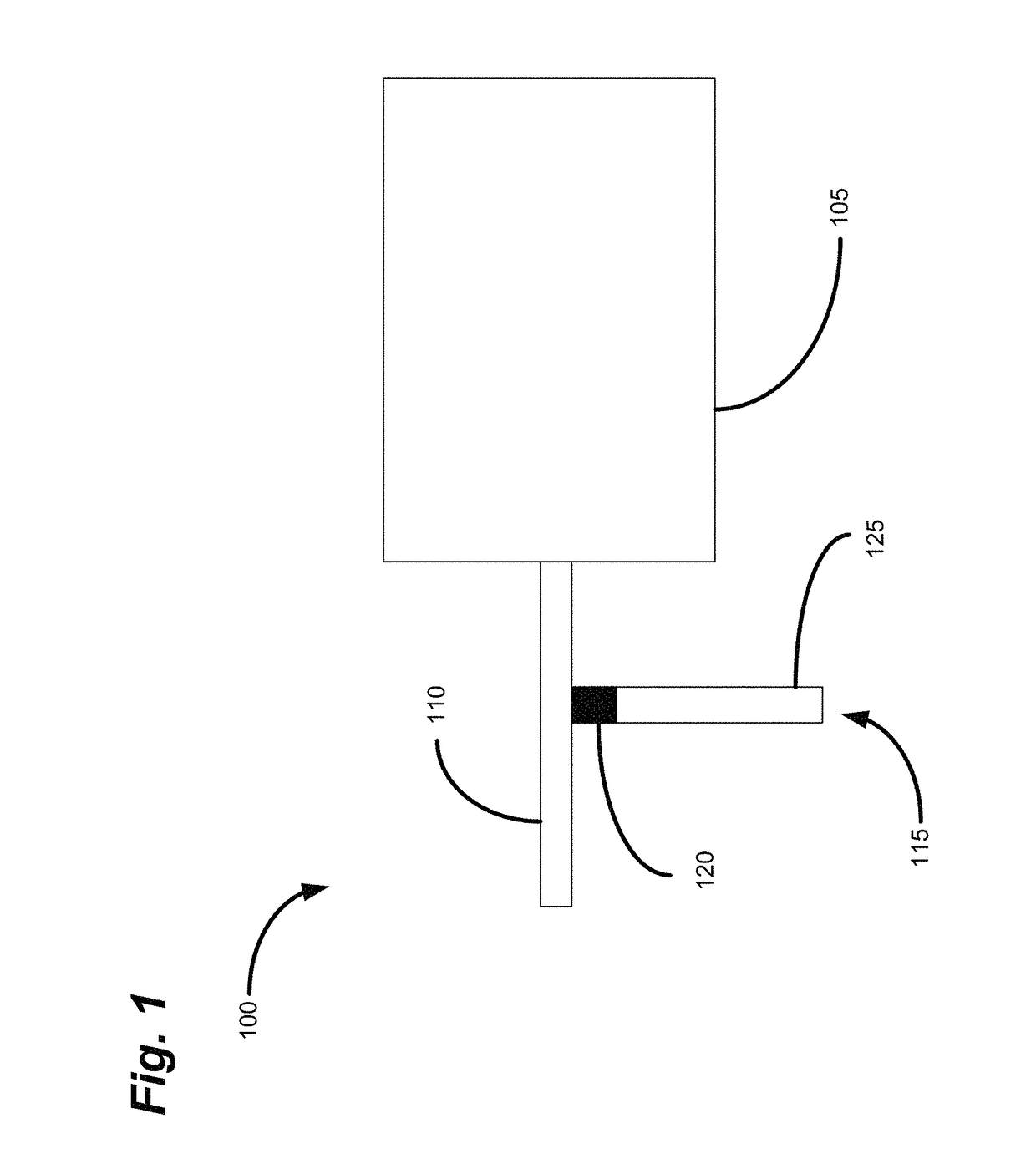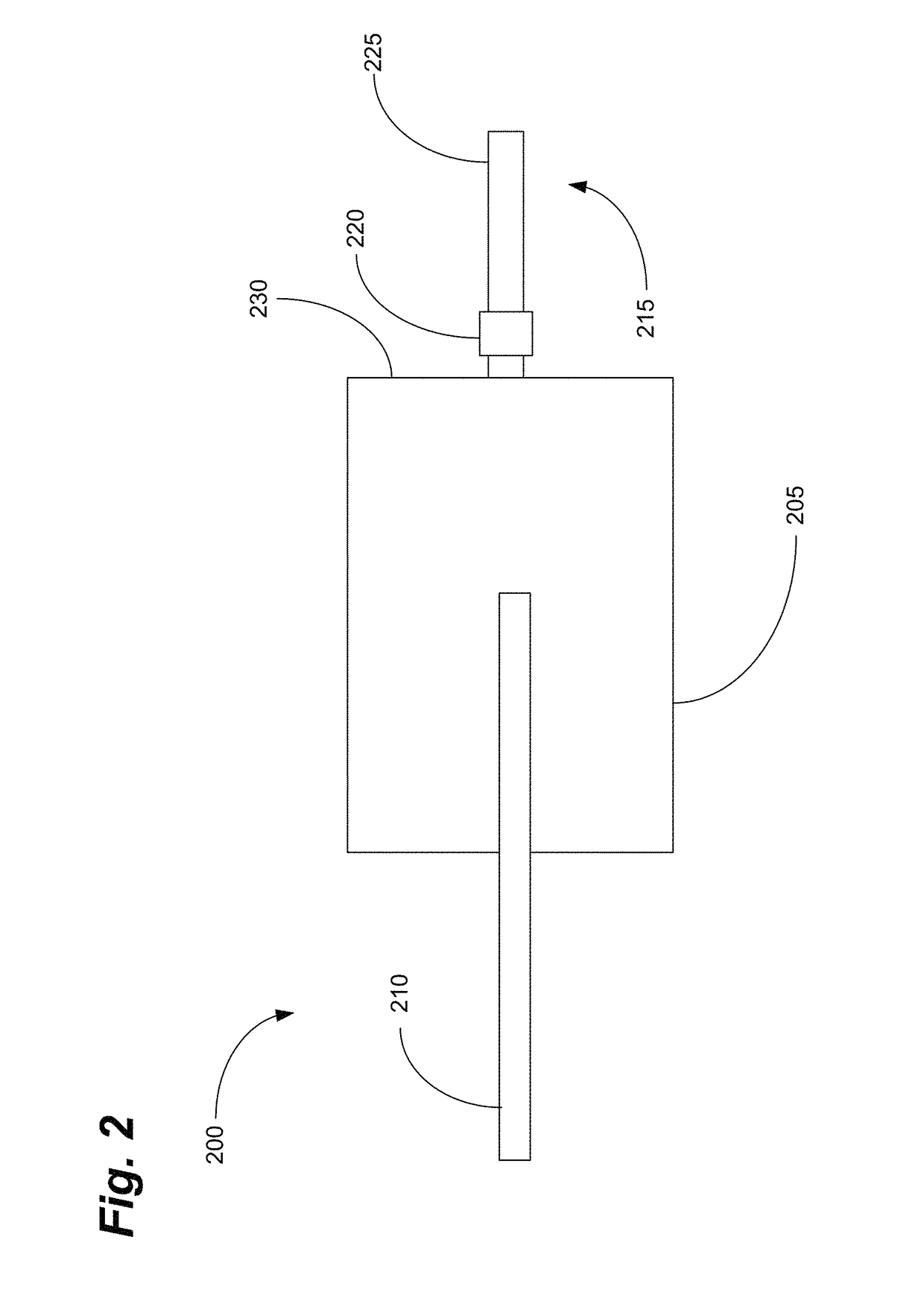Highly sensitive standoff gas sensing using carbon nanotubes and integrated wireless devices
a carbon nanotube and high-sensitivity technology, applied in the field of gas sensors, can solve the problems of false alarms, changes of the same magnitude, insufficient sensitivity for many applications, etc., and achieve the effect of low-cost wireless sensing and easy measurement of the shift of the resonant frequency
- Summary
- Abstract
- Description
- Claims
- Application Information
AI Technical Summary
Benefits of technology
Problems solved by technology
Method used
Image
Examples
example 1
[0051]In some embodiments, a PABS-SWNT solution in water can be prepared for printing CNTs on the substrate. In solid form, however, SWNTs are highly entangled and associated in macroscopic bundles. To disperse these bundles in water, therefore, requires significant effort to break the bundles and dissolve the material. To this end, a portion of material can be sonicated in water.
[0052]In some embodiments, PABS-SWNT powder, of the type sold by Carbon Solutions Inc., Riverside, Calif., for example, can be used to prepare a gas sensing film 120, 220 that is reactive in the presence of ammonia (NH3).5 Aqueous dispersions of PABS-SWNT with a concentration of approximately 5 mg / mL in water can be prepared, for example, by ultrasonication, or other suitable method, followed by deposition onto a paper substrate using, for example and not limitation, ink jet printing, spin coating, or screen printing. Controlled multiple layers of PABS-SWNT can be applied in each fabrication to assure the r...
example 2
[0068]A DMP-2800 tabletop inkjet printer is available from Dimatix, Inc., Santa Clara, Calif.6 To ensure good RF properties of the final product, an in-house recipe was developed taking into account all of the aforementioned parameters that affect the print quality. For all RF traces, such as the patch antenna, Dimatix 1-pL silver nanoink cartridges (DMC-11601) are kept at a distance of 0.5 mm from the surface of the paper. The printer head is first adjusted to achieve a print resolution of 2540 dpi, which ensures good RF conductivity (i.e., approximately 9×106 S / m), up to several gigahertz. Conductive ink CCI-300 from Cabot Corporation, Billerica, Mass.,7 is then jetted through the cartridges at a temperature of 40° C., with the paper substrate maintained at 60° C. Each printed device is then cured in a thermal oven for approximately 2 h at 120° C. 6 www.dimatix.com7 www.cabot-corp.com
Paper Characterization
[0069]Embodiments of the present invention can also comprise a measurement-b...
example 3
[0070]The paper substrate was cured first in a thermal oven for 2 h at 120° C. to mimic the curing process of the printed ink. The results for the extracted relative permittivity of the 10-mil-thick cured paper are shown in FIG. 8a. The measured dielectric loss tangent values were bounded between 0.06-0.07 up to 10 GHz.
Silver Ink Characterization
[0071]The conductivity of the printed conductive ink can be measured in an number of ways, including, for example and not limitation, using a Signatone four-point probe.9 To ensure consistency and good RF conductivity, multiple layers of ink can be printed. 9 www.signatone.com.
PUM
| Property | Measurement | Unit |
|---|---|---|
| resonance frequency | aaaaa | aaaaa |
| resonance frequency shift | aaaaa | aaaaa |
| resonance frequency | aaaaa | aaaaa |
Abstract
Description
Claims
Application Information
 Login to View More
Login to View More - R&D
- Intellectual Property
- Life Sciences
- Materials
- Tech Scout
- Unparalleled Data Quality
- Higher Quality Content
- 60% Fewer Hallucinations
Browse by: Latest US Patents, China's latest patents, Technical Efficacy Thesaurus, Application Domain, Technology Topic, Popular Technical Reports.
© 2025 PatSnap. All rights reserved.Legal|Privacy policy|Modern Slavery Act Transparency Statement|Sitemap|About US| Contact US: help@patsnap.com



